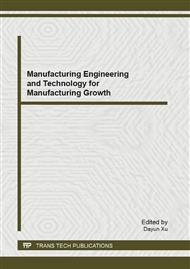p.63
p.72
p.78
p.83
p.90
p.95
p.101
p.107
p.111
Dynamic Model for Product Innovation Alliance Oriented to Competitive Advantage
Abstract:
Technology innovation alliance strategic is a basic and a trend for product innovation in SMEs (small and medium-sized enterprises). Researching on cooperative dynamic mechanism, FGEM for product innovation alliance in SMEs is built based on entropy theory. To improve the product innovation ability and comprehensive entropy management level, a standardized evaluation index and evaluation system is proposed, and a product innovation alliance dynamic evaluation method is constructed to give a new way for sustainable development of enterprises and constant innovation and upgrading of products.
Info:
Periodical:
Pages:
90-94
Citation:
Online since:
December 2012
Authors:
Keywords:
Price:
Сopyright:
© 2013 Trans Tech Publications Ltd. All Rights Reserved
Share:
Citation:


